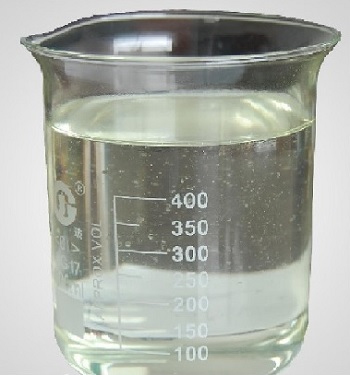| Identification | More | [Name]
Lily aldehyde | [CAS]
80-54-6 | [Synonyms]
2-(4-TERT-BUTYLBENZYL)PROPIONALDEHYDE
3-(4-T-BUTYLPHENYL)-2-ISOBUTYRALDEHYDE
3-(4-TERT-BUTYLPHENYL)-2-METHYLPROPIONALDEHYDE
3-(4-TERT-BUTYLPHENYL)ISOBUTYRALDEHYDE
4-TERT-BUTYL-ALPHA-METHYL-BENZENEPROPANAL
4-TERT-BUTYL-ALPHA-METHYLHYDROCINNAMALDEHYDE
BETA-3-(4-TERT-BUTYLPHENYL)ISOBUTYRALDEHYDE
LILIAL
P-TERT-BUTYL-A-METHYLHYDROCINN AMALDEHYDE
3-(4-tert-Butylphenyl)-2-methylpropanal
4-(1,1-dimethylethyl)-.alpha.-methyl-Benzenepropanal
4-(1,1-dimethylethyl)-alpha-methyl-benzenepropana
4-(1,1-Dimethylethyl)-methylbenzenepropanal
4-tert-butyl-alpha-methyl hydrocinnamic aldehyde
alpha-Methyl, beta-(p-tert-butylphenyl)propionaldehyde
alpha-methyl,beta-(p-tert-butylphenyl)propionaldehyde
alpha-Methyl-p-(tert-butyl)hydrocinnamaldehyde
Benzenepropanal, 4-(1,1-dimethylethyl)-alpha-methyl-
Benzenepropanal, 4-(tert-butyl)-a-methyl-
Benzenepropanal, 4-tert-butyl-alpha-methyl- | [EINECS(EC#)]
201-289-8 | [Molecular Formula]
C14H20O | [MDL Number]
MFCD00047655 | [Molecular Weight]
204.31 | [MOL File]
80-54-6.mol |
| Chemical Properties | Back Directory | [Melting point ]
106-109 °C | [Boiling point ]
150°C 10mm | [density ]
0.946 g/mL at 20 °C(lit.)
| [vapor pressure ]
0.25Pa at 20℃ | [refractive index ]
n20/D 1.505
| [Fp ]
100°C | [storage temp. ]
2-8°C
| [solubility ]
Chloroform (Sparingly), Ethyl Acetate (Slightly) | [form ]
neat | [color ]
Colorless to Light yellow | [Odor]
at 100.00 %. floral muguet watery green powdery cumin | [Odor Type]
floral | [Water Solubility ]
33mg/L at 20℃ | [BRN ]
880140 | [Contact allergens]
Lilial? is a synthetic compound listed as a fragrance
allergen. Its presence is indicated on cosmetics within
the EU. | [InChIKey]
SDQFDHOLCGWZPU-UHFFFAOYSA-N | [LogP]
4.2 at 24℃ | [CAS DataBase Reference]
80-54-6(CAS DataBase Reference) | [NIST Chemistry Reference]
Lilial(80-54-6) | [EPA Substance Registry System]
80-54-6(EPA Substance) |
| Safety Data | Back Directory | [Hazard Codes ]
Xn,N | [Risk Statements ]
R22:Harmful if swallowed.
R38:Irritating to the skin.
R51/53:Toxic to aquatic organisms, may cause long-term adverse effects in the aquatic environment . | [Safety Statements ]
S60:This material and/or its container must be disposed of as hazardous waste . | [RIDADR ]
UN 3082 9/PG 3
| [WGK Germany ]
2
| [RTECS ]
MW4895000
| [F ]
10 | [HS Code ]
29121900 |
| Questions And Answer | Back Directory | [Description]
Lily aldehyde (also known as lysmeral or Lilial) is a chemical compound commonly used as a perfume in cosmetic preparations and laundry powders1-3. It is fresh light green floral lily muguet lindenblossom aldehyde. Lilial is used in a wide variety of compositions where it confers a particularly recommended for floral notes such as muguet, linden-blossom and cyclamen2.
| [Chemical Properties]
Lilial is a colorless to pale yellow liquid, as yet has not been found in nature. It has a higher stability than the homologous cyclamenaldehyde and therefore is used as scent in soaps.

Lilial is a widely used fragrance compound found naturally in the essential oil of chamomile and is used synthetically in a variety of beauty products, including perfumes, shampoos, deodorants, tanning lotions and hairstyling products, primarily for its Lily of the Valley aroma.
|
| Hazard Information | Back Directory | [Uses]
2-(4-tert-Butylbenzyl)propionaldehyde may be used as a reference standard for the determination of 2-(4-tert-butylbenzyl)propionaldehyde in:
- Human urine samples by ultra-high performance liquid chromatography-tandem mass spectrometry (UHPLC-MS/MS) equipped with electrospray ionization (ESI) source and multiple reaction monitoring (MRM) mode of detection.
- Deodorants and air fresheners by sonication extraction coupled with gas chromatography-mass spectrometry (GC-MS).
- Scented consumer products by GC-MS as well as GC in combination with olfactometry.
| [Uses]
In addition to its applications in the perfume and aroma industry, lilial is used mainly for the synthesis of substituted 3-(4-tert-butylphenyl)-2-methylpropylamines, a new class of substances with fungicidal properties. These compounds are effective against mildew in barley and wheat. | [Production Methods]
Lily aldehyde is produced industrially almost solely by aldol condensation of 4-tert-butylbenzaldehyde and propionaldehyde to give 4-tert-butyl-α-methylcinnamaldehyde, which can be hydrogenated selectively on noble metal catalysts such as Pd, Rh, Pd – Pr2O3 on Al2O3, or on modified cobalt catalysts. The aldol condensation and the hydrogenation can be carried out in one step in the presence of a hydrogenation catalyst.
The Friedel – Crafts reaction of 4-tertbutylbenzene with methacrolein or methacrolein diacetate proceeds in an analogous manner to the preparation of cyclamenaldehyde.
Further possibilities are the Rh-catalyzed hydroformylation of 1-(4-tert-butylphenyl)-1- methoxypropene and subsequent partial hydrogenation, the palladium salt catalyzed reaction of 4-tert-butylphenylhalide with methallylalcohol, and the dehydrogenation of 3-(4-tert-butylphenyl)-2-methylpropanol on silver catalysts. | [General Description]
2-(4-tert-Butylbenzyl)propionaldehyde is categorized under the synthetic fragrance class of compounds widely utilized in consumer products such as perfumes, after shave lotions, cosmetics, etc. | [Flammability and Explosibility]
Nonflammable | [Trade name]
Lilestralis Pure (Innospec), Lysmeral® Extra (BASF). |
|
|